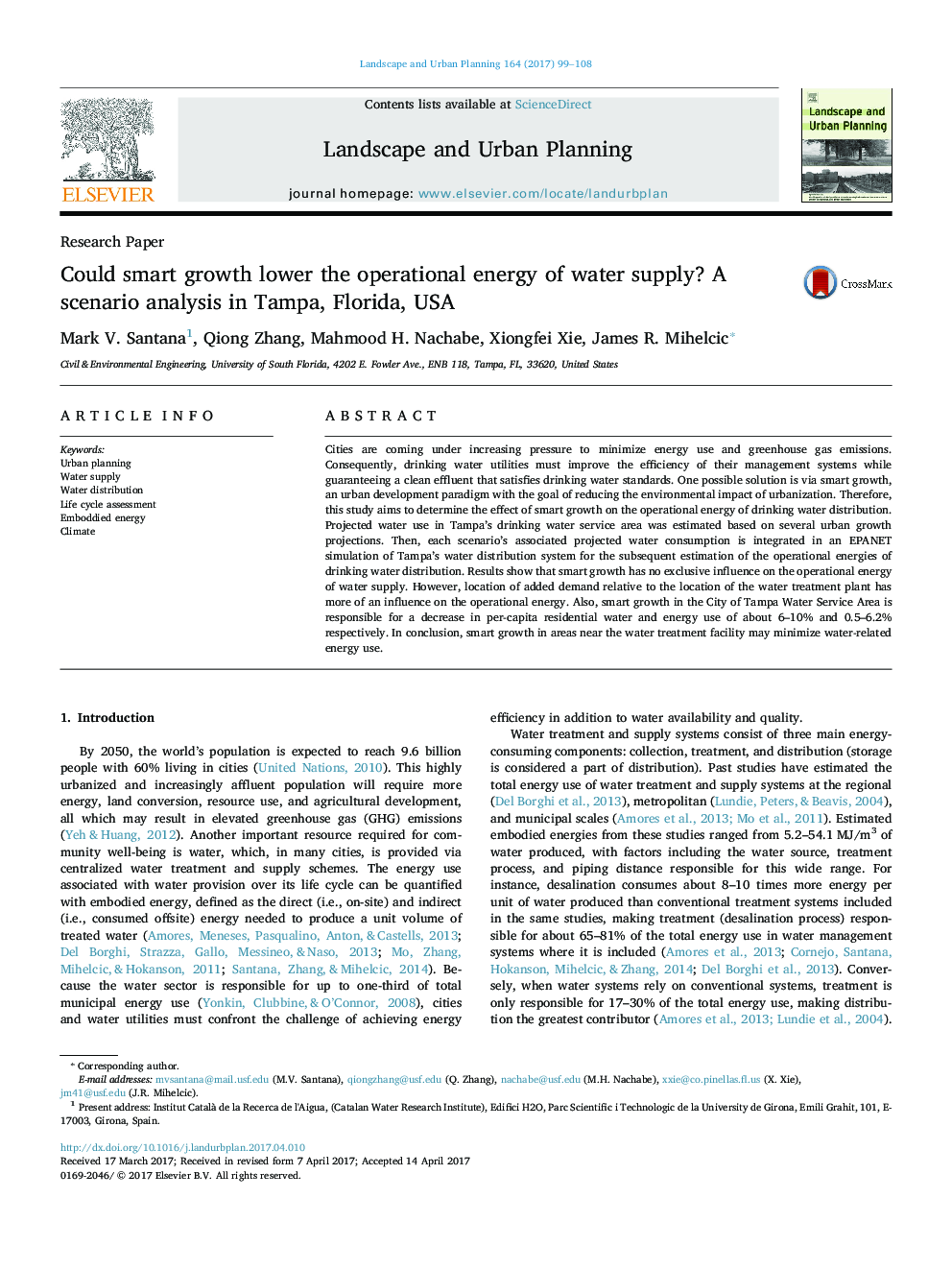| Article ID | Journal | Published Year | Pages | File Type |
|---|---|---|---|---|
| 5115017 | Landscape and Urban Planning | 2017 | 10 Pages |
Abstract
Cities are coming under increasing pressure to minimize energy use and greenhouse gas emissions. Consequently, drinking water utilities must improve the efficiency of their management systems while guaranteeing a clean effluent that satisfies drinking water standards. One possible solution is via smart growth, an urban development paradigm with the goal of reducing the environmental impact of urbanization. Therefore, this study aims to determine the effect of smart growth on the operational energy of drinking water distribution. Projected water use in Tampa's drinking water service area was estimated based on several urban growth projections. Then, each scenario's associated projected water consumption is integrated in an EPANET simulation of Tampa's water distribution system for the subsequent estimation of the operational energies of drinking water distribution. Results show that smart growth has no exclusive influence on the operational energy of water supply. However, location of added demand relative to the location of the water treatment plant has more of an influence on the operational energy. Also, smart growth in the City of Tampa Water Service Area is responsible for a decrease in per-capita residential water and energy use of about 6-10% and 0.5-6.2% respectively. In conclusion, smart growth in areas near the water treatment facility may minimize water-related energy use.
Related Topics
Life Sciences
Agricultural and Biological Sciences
Ecology, Evolution, Behavior and Systematics
Authors
Mark V. Santana, Qiong Zhang, Mahmood H. Nachabe, Xiongfei Xie, James R. Mihelcic,
